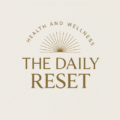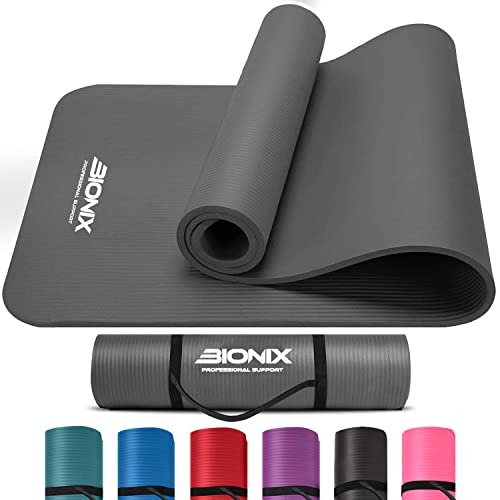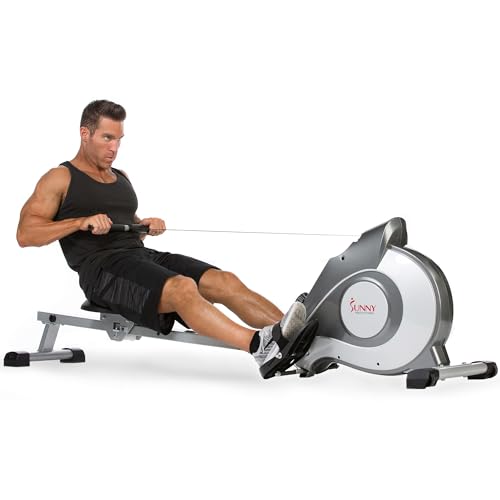Struggling with energy decline, stubborn weight gain, or feeling weaker as you age? The blogs below cut through the confusion with science-backed solutions that actually work. From proven workout strategies to sustainable weight management, we provide actionable answers to your biggest health challenges. Combined with our Daily Reset program, these insights become the exact blueprint you need to stay strong, energetic, and healthy for life.

Discover what works for you — hover over the images below to explore blogs tailored to your interests.
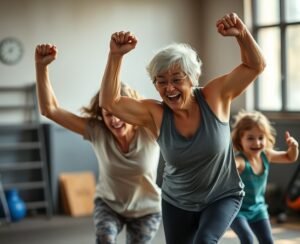
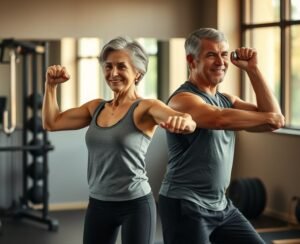

Skip Ahead To The Essentials
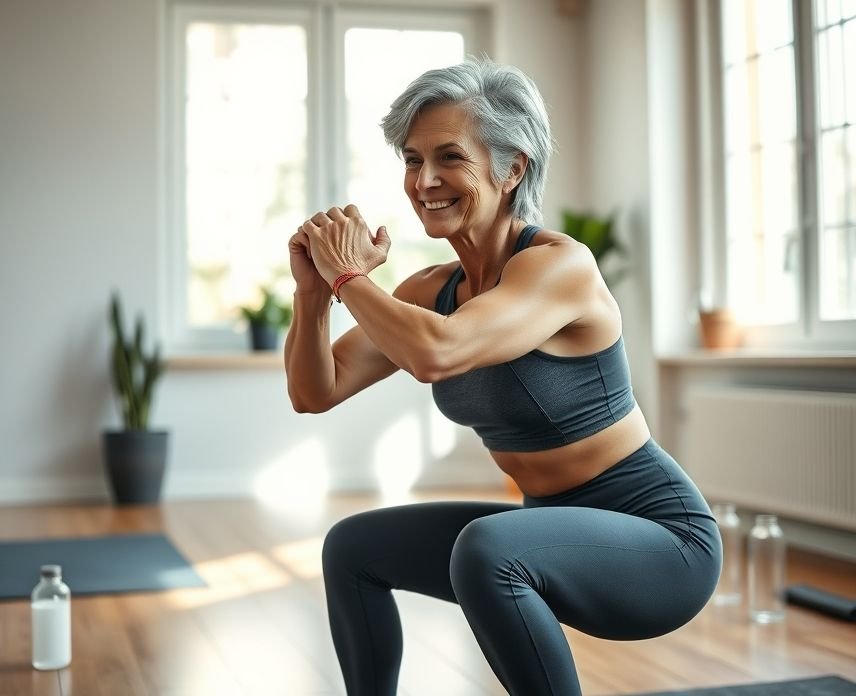
The Best Workouts for Longevity and Functional Fitness: Your Complete Guide
Living longer isn’t just about adding years to your life. Instead, it’s about adding life to your years. The right exercise approach can dramatically transform how you age, keeping you strong, mobile, and independent well into your golden years.
Functional fitness and longevity-focused workouts offer a powerful solution to age-related decline. However, many people struggle with where to start or which exercises truly matter. This comprehensive guide will show you exactly what works.
What Is Functional Fitness and Why Does It Matter?
Functional fitness prepares your body for real-world activities. Rather than isolating muscles like traditional gym workouts, these exercises teach muscle groups to work together effectively.
Consider everyday movements like squatting to pick up groceries or reaching overhead to grab items from shelves. These activities are performed safely and efficiently when your body is trained functionally.
Recent research demonstrates that functional fitness reduces injury risk significantly. Moreover, it improves mobility and enhances joint stability—all crucial factors for maintaining independence as you age.
Quality resistance bands and suspension trainers can help you perform functional movements at home. These versatile tools allow you to train movement patterns rather than isolated muscles, solving the problem of limited gym access.
The Science Behind Exercise and Longevity
Resistance Training: Your Anti-Aging Foundation
Perhaps no form of exercise offers more longevity benefits than resistance training. A 2022 study tracking 115,000 people aged 65 and older revealed remarkable findings.
Participants who added strength training to aerobic exercise experienced lower risk of death from any cause. This benefit was observed over nearly eight years of follow-up, regardless of other health factors.
Furthermore, the benefits extend far beyond muscle building. Resistance training improves physical performance, movement control, and cognitive abilities. Even more impressive, it can slow and often reverse age-related muscle fiber changes.
Research suggests that just 30-60 minutes of resistance training per week provides substantial health benefits. This makes strength training highly accessible for busy lifestyles.
Adjustable dumbbells or resistance bands solve the common problem of needing various weights for progression. These tools grow with your strength, providing years of effective training from a single investment.
- WORKOUT SMARTER: With BRAINGAIN’s 24kg adjustable dumbbell set, seamlessly switch between 15 different weights in second…
- 15 WEIGHTS IN ONE: Focus on your form with our advanced locking system that keeps the weights secure. Easily adjust from…
- SAVE SPACE, ACHIEVE MORE – Replace multiple dumbbells with our compact, adjustable set. Designed to stay with you on you…
Key Functional Resistance Exercises:
- Squats (mimicking sit-to-stand movements)
- Push-ups or chest press (pushing heavy doors)
- Rows (pulling open drawers or doors)
- Overhead press (reaching high shelves)
Cardiovascular Training: Beyond Heart Health
Aerobic exercise has long been recognized for cardiovascular benefits. However, new research reveals additional longevity mechanisms that extend far beyond heart health.
According to 2024 research presented at the American Physiology Summit, exercise participation is linked to less DNA damage in blood vessel cells. This cellular protection may be key to healthy aging.
Recent findings show that adults exercising two to four times the recommended amount had 21-23% lower all-cause mortality risk. Specifically, this meant 150-299 minutes of vigorous activity per week.
Fitness trackers and heart rate monitors help solve the problem of guessing exercise intensity. These devices ensure you’re training in the right zones for maximum longevity benefits.
- Stylish Design, Vibrant Display: The lightweight aluminum build blends effortless style with workout durability, while t…
- All-in-One Activity Tracking: The Amazfit Bip 6 fitness tracker watch offers 140+ workout modes, including HYROX Race, S…
- Up to 14 Days Battery Life: Power through your day with up to two weeks of battery life – no nightly charging needed
Effective Functional Cardio Options:
- Walking or hiking on varied terrain
- Stair climbing (builds leg strength simultaneously)
- Swimming (full-body movement patterns)
- Dancing (improves coordination and balance)
Balance and Mobility: The Foundation of Independence
Balance training becomes increasingly critical with age. Poor balance directly impacts fall risk, which is a leading cause of injury in older adults.
Functional balance exercises challenge multiple systems simultaneously. Consequently, they prepare you for real-world scenarios where balance is compromised.
Balance boards and stability balls provide targeted solutions for improving proprioception and core strength. These tools make balance training more challenging and effective than static exercises alone.
Yoga mats and blocks solve the problem of uncomfortable floor exercises. Quality equipment makes stretching and mobility work more comfortable and consistent.
Your Complete Longevity Exercise Formula
Based on current research, an optimal program includes specific weekly targets. However, the key is finding a sustainable approach that fits your lifestyle.
Weekly Exercise Structure
Resistance Training: 2-3 sessions totaling 30-60 minutes Cardiovascular Exercise: 150-300 minutes moderate intensity or 75-150 minutes vigorous Balance/Mobility Work: 2-3 sessions of 15-20 minutes each Daily Movement: Brief 5-10 minute activity sessions after meals
Frequency matters significantly for older adults. Research shows that women exercising three times weekly gain greater functional benefits than those exercising less frequently.
All-in-one home gym systems solve the space and cost problems of multiple equipment pieces. These versatile machines provide resistance training, cardio, and functional movement options in one compact unit.
Sample Weekly Framework
Monday/Wednesday/Friday: Full-body resistance training (30-40 minutes) Tuesday/Thursday/Saturday: Cardio and balance work (30-45 minutes) Sunday: Active recovery or recreational activity (30-60 minutes)
Workout scheduling apps solve the problem of forgotten exercise sessions. Digital reminders and progress tracking keep you accountable to your longevity goals.
Essential Principles for Long-Term Success
Progressive Overload with Purpose
While intensity matters, sustainable progression is more important than dramatic changes. Appropriately individualized programs with expert guidance provide the most effective long-term benefits.
Adjustable weight systems solve the progression problem by allowing gradual increases. This prevents plateaus while reducing injury risk from sudden jumps in resistance.
Movement Quality Over Quantity
Perfect form in functional movements translates directly to safer daily activities. Focus on controlled movements through full ranges of motion rather than heavy weights or fast repetitions.
Consistency Trumps Perfection
Making exercise habitual rather than optional is crucial for longevity benefits. Therefore, remove decision fatigue by scheduling workouts like important appointments.
Home gym equipment solves the consistency problem by eliminating travel time and scheduling conflicts. Having equipment readily available removes common barriers to regular exercise.
Age-Specific Exercise Strategies
Ages 40-50: Building Your Foundation
This decade is crucial for establishing strength reserves and movement patterns. Focus on building a solid base before age-related decline accelerates.
During this phase, hormone changes can affect muscle mass and bone density. Consequently, resistance training becomes even more important for long-term health.
Comprehensive home gym packages provide solutions for busy professionals who struggle with gym schedules. These systems enable effective training on your timeline.
Ages 60+: Maintaining Independence
Emphasis shifts to balance, functional strength, and independence preservation. NIA-supported research spanning 40 years shows multiple benefits of strength training for older adults.
These benefits include maintaining muscle mass, improving mobility, and increasing healthy lifespan years. However, safety becomes a paramount concern during this phase.
Stability-focused equipment like balance trainers addresses fall prevention needs. These tools provide safe ways to challenge balance while building confidence in movement.
Post-70: It’s Never Too Late to Start
Even beginning exercise after age 70 provides significant benefits. Focus on safety, supervision, and gradual progression while maintaining core training principles.
Research consistently shows improvements in strength, balance, and cognitive function regardless of starting age. Nevertheless, professional guidance becomes increasingly valuable.
Senior-friendly exercise equipment solves mobility and safety concerns for older adults. Specialized tools provide effective workouts while minimizing injury risk.
Getting Started: Your Action Plan
The most effective workout for longevity isn’t found in extreme fitness regimens. Instead, it’s discovered in consistent, functional movement patterns that prepare your body for decades of active living.
Start with basic equipment that grows with your fitness level. Resistance bands, adjustable dumbbells, and a stability ball provide everything needed to begin your longevity fitness journey.
Focus on the weekly formula: 30-60 minutes of resistance training, 150+ minutes of cardio, and regular balance work. This research-backed approach provides maximum benefits with minimal time investment.
By combining these elements in a sustainable routine, you’re making a powerful investment in independence, cognitive function, and overall quality of life.
Your 90-year-old self will thank you for the investment you make today. The time to start building your longevity fitness foundation is now.
Ready to begin your longevity fitness journey? Start with the right equipment and follow the proven weekly formula for sustainable, long-term health and independence.
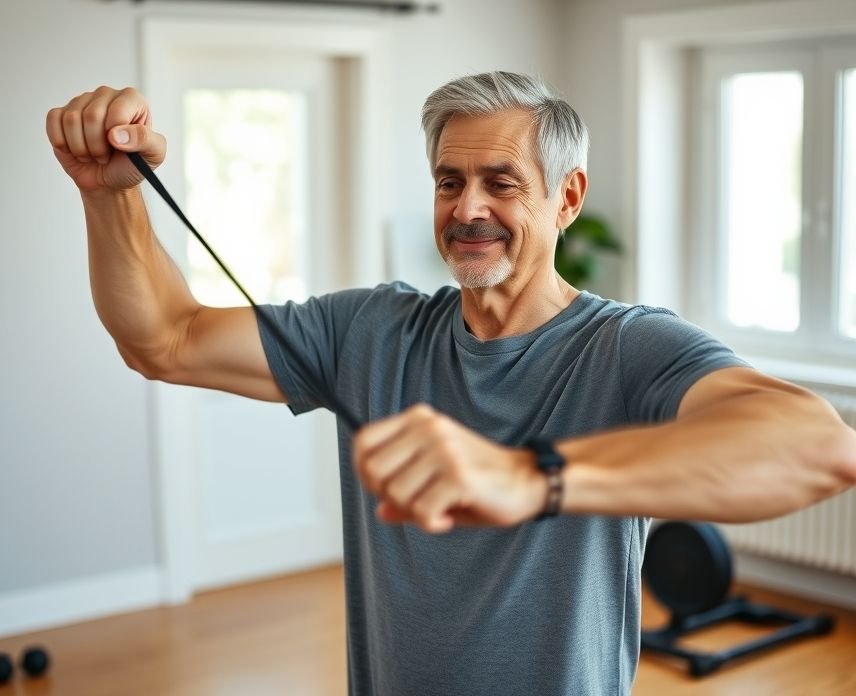
How Strength Training Can Help You Age Gracefully: Your Secret to Staying Strong and Vibrant
Aging doesn’t have to mean accepting weakness, frailty, or a decline in quality of life. While we can’t stop the clock, we can certainly influence how our bodies respond to the passage of time. Strength training emerges as one of the most powerful tools in our anti-aging arsenal.
The Science Behind Aging and Muscle Loss
After age 30, adults typically lose 3-8% of their muscle mass per decade. This process, called sarcopenia, accelerates after age 60. However, research shows that regular strength training can slow, stop, or even reverse this decline.
Your muscles don’t just move your body. They also regulate blood sugar, support bone density, and maintain your metabolic rate. When muscle mass decreases, your entire health foundation weakens.
Key Benefits of Strength Training for Healthy Aging
Preserves Muscle Mass and Bone Density
Resistance training sends powerful signals to your body. It tells your bones to stay strong and your muscles to grow. Studies demonstrate that adults who lift weights maintain significantly more muscle mass than their sedentary counterparts.
Furthermore, strength training increases bone mineral density. This reduces fracture risk and helps prevent osteoporosis. Quality resistance bands or adjustable dumbbells can provide the stimulus your bones need to stay resilient.
Improves Balance and Reduces Fall Risk
Strong muscles create better balance and coordination. This becomes increasingly important as we age. A comprehensive strength program targeting your core, legs, and stabilizing muscles can dramatically reduce fall risk.
Additionally, functional movements like squats and lunges translate directly to daily activities. These exercises help you navigate stairs, get up from chairs, and maintain independence longer.
Enhances Metabolic Health
Muscle tissue burns more calories than fat tissue, even at rest. Therefore, maintaining muscle mass helps regulate your weight and metabolism. Strength training also improves insulin sensitivity, which helps control blood sugar levels.
Moreover, resistance exercise creates beneficial changes in your cardiovascular system. It lowers blood pressure and improves cholesterol profiles. These adaptations support heart health throughout your golden years.
Getting Started: Essential Equipment for Home Strength Training
Building a home gym doesn’t require expensive machines or extensive space. A few key pieces of equipment can provide everything you need for effective strength training.
Resistance Bands: Versatile and Joint-Friendly
Resistance bands offer variable resistance that accommodates different strength levels. They’re particularly valuable for older adults because they provide smooth, controlled resistance throughout the entire range of motion. Premium resistance band sets with multiple resistance levels allow you to progress safely while protecting your joints.
- 𝗠𝗨𝗟𝗧𝗜𝗣𝗟𝗘 𝗧𝗥𝗔𝗜𝗡𝗜𝗡𝗚 𝗠𝗘𝗧𝗛𝗢𝗗𝗦, 𝗔𝗡𝗧𝗜-𝗣𝗔𝗜𝗡 𝗚𝗥𝗜𝗣 𝗣𝗔𝗗𝗦 — The pull up assist bands set comes with 5 different color straps and le…
- 𝗠𝗔𝗗𝗘 𝗢𝗙 𝗡𝗔𝗧𝗨𝗥𝗔𝗟 𝗟𝗔𝗧𝗘𝗫, 𝗦𝗧𝗥𝗢𝗡𝗚 𝗔𝗡𝗗 𝗗𝗨𝗥𝗔𝗕𝗟𝗘 — The pull up assist bands material is made of natural latex, strong and durab…
- 𝗦𝗨𝗜𝗧𝗔𝗕𝗟𝗘 𝗙𝗢𝗥 𝗙𝗨𝗟𝗟 𝗕𝗢𝗗𝗬 𝗧𝗥𝗔𝗜𝗡𝗜𝗡𝗚, 𝗦𝗨𝗜𝗧𝗔𝗕𝗟𝗘 𝗙𝗢𝗥 𝗔𝗡𝗬 𝗣𝗘𝗢𝗣𝗟𝗘 — Elastic band training help you stretch and train your whole b…
Adjustable Dumbbells: Maximum Versatility
Adjustable dumbbells save space while providing unlimited exercise possibilities. They allow you to target every major muscle group effectively. Modern adjustable dumbbell systems make it easy to change weights quickly between exercises, keeping your workouts efficient and engaging.
- WORKOUT SMARTER: With BRAINGAIN’s 24kg adjustable dumbbell set, seamlessly switch between 15 different weights in second…
- 15 WEIGHTS IN ONE: Focus on your form with our advanced locking system that keeps the weights secure. Easily adjust from…
- SAVE SPACE, ACHIEVE MORE – Replace multiple dumbbells with our compact, adjustable set. Designed to stay with you on you…
Stability Equipment: Building Your Foundation
A quality exercise mat provides comfort and stability for floor exercises. Stability balls add an element of core training to traditional exercises. These tools help develop the deep stabilizing muscles that support proper posture and movement patterns.
- SLOW DEFLATION – Our exercise ball is made with the honey comb structure which makes it deflate slowly resistant if punc…
- NON SLIP SURFACE – The Gym ball is not picky at all when it comes to the practice venue – be it home, the gym or outdoor…
- Office Ball Chair for Fun and Better Posture – Tired of the ordinary office chairs? No worries! We have you covered! Try…
Creating Your Age-Friendly Strength Training Routine
Start Slowly and Progress Gradually
Begin with bodyweight exercises or light resistance. Focus on mastering proper form before increasing intensity. This approach prevents injury and builds confidence.
Your initial goal should be consistency rather than intensity. Two to three sessions per week provide excellent results for beginners.
Focus on Functional Movements
Choose exercises that mirror daily activities. Squats help with sitting and standing. Push-ups strengthen your ability to get up from the floor. Rows improve posture and counteract the effects of prolonged sitting.
These movement patterns become increasingly important as we age. They maintain the strength and mobility needed for independent living.
Include All Major Muscle Groups
A balanced program targets your legs, back, chest, shoulders, arms, and core. This comprehensive approach ensures you develop functional strength throughout your entire body.
Don’t neglect smaller stabilizing muscles. They play crucial roles in injury prevention and movement quality.
Overcoming Common Concerns About Strength Training
“I’m Too Old to Start”
Research consistently shows that people in their 70s, 80s, and beyond can safely build muscle and strength. Age is not a barrier to starting strength training. However, consulting with healthcare providers before beginning any new exercise program is always wise.
“I Don’t Want to Get Bulky”
Building large muscles requires specific training approaches and typically doesn’t happen accidentally. Most people, especially older adults, will develop lean, functional strength rather than bulk.
“I Don’t Have Time”
Effective strength training sessions can last just 20-30 minutes. Even two sessions per week provide significant benefits. The time investment pales in comparison to the years of independence and vitality you’ll gain.
The Long-Term Investment in Your Health
Strength training represents one of the best investments you can make in your future self. The benefits compound over time, creating a foundation for healthy aging that pays dividends for decades.
Starting today, regardless of your current fitness level, puts you on a path toward greater strength, independence, and vitality. Your future self will thank you for taking action now.
Remember, aging gracefully isn’t about accepting decline—it’s about actively working to maintain and improve your physical capabilities. With the right approach and equipment, you can build strength that lasts a lifetime.

The Secret Weapon You’re Probably Ignoring: How Protein Transforms Your Body at Any Age
Picture this: You’re standing in your kitchen at 3 PM, staring into the fridge with that familiar afternoon hunger gnawing at you. Meanwhile, your friend Sarah walks by, glowing with energy, mentioning she just finished her workout and feels amazing. What’s her secret?
The answer might surprise you. It’s not some fancy supplement or trending superfood. Sarah discovered what many health experts have known for years – protein is the ultimate game-changer for both weight management and aging gracefully.
Why Your Body Craves More Protein Than You Think
Let’s start with a reality check. Most people think they’re getting enough protein, but here’s the truth: you’re probably falling short. Your body uses protein for virtually everything – building muscle, creating hormones, supporting your immune system, and yes, keeping you feeling satisfied after meals.
Think of protein as your body’s construction crew. Without enough workers on the job, things start falling apart. Your metabolism slows down. Your muscles begin to shrink. Energy levels plummet. Sound familiar?
Research shows that increasing your protein intake can boost your metabolism by up to 30% for several hours after eating. That’s like getting a free workout just from your lunch! Additionally, protein requires more energy to digest than carbs or fats, meaning you burn more calories processing it.
The Weight Loss Connection You Need to Know
Here’s where things get interesting. When you eat protein, something magical happens in your brain. Your hunger hormones – ghrelin and leptin – start working in your favor instead of against you.
Ghrelin, your “I’m hungry” hormone, drops significantly. Meanwhile, leptin, your “I’m full” signal, increases. This powerful combination means you naturally eat less without feeling deprived. No more white-knuckling through cravings or feeling guilty about that afternoon snack attack.
But wait, there’s more. Protein helps preserve your precious muscle mass while you lose weight. Most diets cause you to lose both fat and muscle, which tanks your metabolism. However, adequate protein intake keeps your muscles intact, ensuring the weight you lose comes primarily from fat stores.
Studies reveal that people who increase their protein intake to 25-30% of their total calories lose significantly more weight and keep it off longer than those following low-protein diets. Furthermore, they report feeling more satisfied throughout their weight loss journey.
Aging Gracefully: Your Protein Power Plan
Now let’s talk about something most fitness magazines won’t tell you – protein becomes even more critical as you age. Starting around age 30, you naturally lose 3-8% of your muscle mass per decade. This process accelerates after 60, leading to frailty, increased fall risk, and a slower metabolism.
The good news? Protein acts like a fountain of youth for your muscles. Consuming adequate protein, especially when combined with resistance training, can slow or even reverse age-related muscle loss.
Your skin benefits too. Collagen, the protein responsible for youthful, elastic skin, relies on amino acids from your diet. Without sufficient protein, your skin loses its bounce and develops more wrinkles. Think of protein as internal skincare that works from the inside out.
Quality Matters: Choosing Your Protein Sources Wisely
Not all proteins are created equal. Your body needs all nine essential amino acids to function optimally. Complete proteins – found in animal products like chicken, fish, eggs, and dairy – provide this full spectrum.
Plant-based options require more strategy. Combining foods like rice and beans, or quinoa with nuts, creates complete protein profiles. However, plant proteins often require larger portions to match the amino acid content of animal sources.
Timing also plays a crucial role. Spreading protein throughout the day optimizes muscle protein synthesis. Instead of loading up at dinner, aim for 20-30 grams at each meal. This approach keeps your body in muscle-building mode all day long.
For busy lifestyles, [protein supplements] can bridge nutritional gaps effectively. Look for options with minimal ingredients and third-party testing for purity and potency.
The Morning Protein Game-Changer
Here’s a simple strategy that transforms your entire day: start with protein. Instead of grabbing a bagel or cereal, opt for eggs, Greek yogurt, or a protein smoothie. This single change stabilizes your blood sugar, reduces cravings, and sets you up for better food choices all day.
Research participants who ate a high-protein breakfast consumed 400 fewer calories throughout the day without consciously trying to restrict intake. They also reported better mood and energy levels. That’s the power of protein working in your favor.
Consider keeping [high-quality protein bars] or [protein powder] on hand for those hectic mornings when cooking isn’t possible. The convenience factor removes excuses and keeps you consistent.
Muscle Memory: Your Secret Aging Advantage
Here’s something fascinating about muscle and protein. Even if you’ve been inactive for years, your muscles remember their former strength – a phenomenon called muscle memory. When you start eating adequate protein and exercising again, your muscles rebuild faster than someone starting from scratch.
This means it’s never too late to start. Whether you’re 35 or 75, increasing your protein intake can help restore lost muscle mass and strength. The key is consistency, not perfection.
Many people find that [targeted amino acid supplements] help accelerate recovery and muscle building, especially when whole food sources fall short of daily needs.
Practical Protein Strategies That Actually Work
Let’s get practical. Aim for 0.8 to 1.2 grams of protein per pound of body weight, depending on your activity level and goals. Active individuals and those over 50 need the higher end of this range.
Track your intake for a week using a simple app. Most people discover they’re eating far less protein than they thought. This awareness alone often sparks positive changes.
Meal prep becomes your best friend. Cook proteins in batches – grilled chicken, hard-boiled eggs, or baked salmon. Having ready-to-eat options prevents impulsive, low-protein food choices.
For those struggling to meet daily targets through food alone, [premium protein supplements] offer convenience without compromising quality. Look for products with minimal processing and natural ingredients.
The Metabolism Boost You’ve Been Missing
Your metabolism isn’t fixed – it’s flexible. Protein increases your metabolic rate through the thermic effect of food. Simply put, your body burns more calories digesting protein than other macronutrients.
This effect compounds over time. People who consistently eat adequate protein maintain higher metabolic rates, making weight management easier as they age. It’s like having a slightly faster engine that burns more fuel even at idle.
Combining protein with strength training amplifies these benefits. Muscle tissue is metabolically active, burning calories even at rest. More muscle equals a faster metabolism, creating a positive cycle of easier weight management.
Sleep, Recovery, and Protein’s Hidden Role
Here’s something most people don’t realize: protein affects your sleep quality. Amino acids like tryptophan help produce serotonin and melatonin, hormones crucial for restful sleep. Better sleep means better recovery, hormone balance, and weight management.
Additionally, your body repairs and builds muscle during sleep. Without adequate protein, this recovery process suffers. You wake up feeling unrested and struggle with the next day’s activities.
Consider having a small protein snack before bed – Greek yogurt with berries or a [casein protein shake] that provides steady amino acid release throughout the night.
Making It Sustainable: Your Long-Term Success Plan
Sustainability trumps perfection every time. Rather than overhauling your entire diet overnight, make gradual changes. Add protein to meals you already enjoy. Swap regular yogurt for Greek yogurt. Choose protein-rich snacks over empty calories.
Find protein sources you genuinely enjoy. If you hate chicken breast, explore fish, eggs, legumes, or [plant-based protein options]. The best protein is the one you’ll actually eat consistently.
Build flexibility into your approach. Some days you’ll nail your protein goals; others you’ll fall short. The key is getting back on track without guilt or self-criticism.
Your Next Steps Start Today
Understanding protein’s role in weight management and healthy aging is just the beginning. Knowledge without action changes nothing. Start with one small change today – add protein to your breakfast, prep some hard-boiled eggs, or research [quality protein supplements] that fit your lifestyle.
Your future self will thank you for the investment you make today. Every gram of protein you consume is building a stronger, leaner, more vibrant version of yourself. The question isn’t whether protein works – it’s whether you’re ready to make it work for you.
Remember, you don’t have to be perfect. You just have to start. Your journey to better health, sustainable weight management, and graceful aging begins with your next meal. Make it count.
